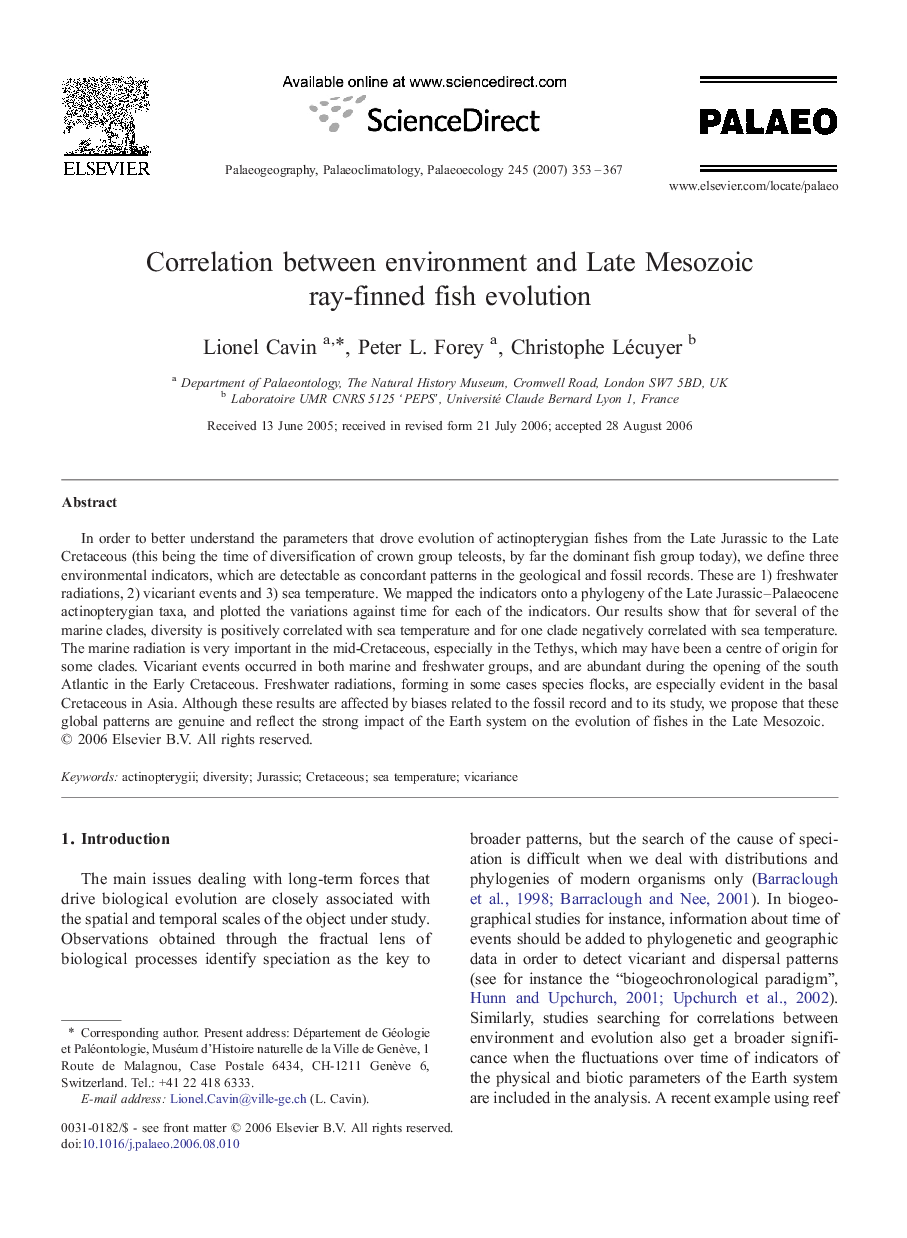| کد مقاله | کد نشریه | سال انتشار | مقاله انگلیسی | نسخه تمام متن |
|---|---|---|---|---|
| 4469054 | 1622357 | 2007 | 15 صفحه PDF | دانلود رایگان |

In order to better understand the parameters that drove evolution of actinopterygian fishes from the Late Jurassic to the Late Cretaceous (this being the time of diversification of crown group teleosts, by far the dominant fish group today), we define three environmental indicators, which are detectable as concordant patterns in the geological and fossil records. These are 1) freshwater radiations, 2) vicariant events and 3) sea temperature. We mapped the indicators onto a phylogeny of the Late Jurassic–Palaeocene actinopterygian taxa, and plotted the variations against time for each of the indicators. Our results show that for several of the marine clades, diversity is positively correlated with sea temperature and for one clade negatively correlated with sea temperature. The marine radiation is very important in the mid-Cretaceous, especially in the Tethys, which may have been a centre of origin for some clades. Vicariant events occurred in both marine and freshwater groups, and are abundant during the opening of the south Atlantic in the Early Cretaceous. Freshwater radiations, forming in some cases species flocks, are especially evident in the basal Cretaceous in Asia. Although these results are affected by biases related to the fossil record and to its study, we propose that these global patterns are genuine and reflect the strong impact of the Earth system on the evolution of fishes in the Late Mesozoic.
Journal: Palaeogeography, Palaeoclimatology, Palaeoecology - Volume 245, Issues 3–4, 16 March 2007, Pages 353–367